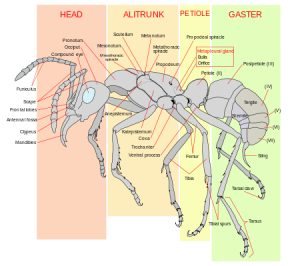When a person hears the word “fire ants” mean usually comes to mind due to their aggressive nature. Most people know fire ants for their reddish color and sting that inflicts pain on their victims. If a fire ant mound is disturbed, most people know immediately from the swarm that occurs that they have just made a horrible and painful mistake. Fire ants are not insects that should be taken for granted or should one wait for them to move on to another location. Once you have realized you have a fire ant infestation, your problem becomes even more difficult to eliminate.
Unless you kill the queen herself, spraying the mound is not the only answer to resolving your problem with fire ants. In fact, you may find that spraying the fire ant mound is only a temporary solution as within just a few days, you may find the return of the fire ants to the original mound area. In order to work on reducing your fire ant problem, you will need to target as many areas as possible in which the fire ants may be dwelling other than the mound. Unfortunately, you will not be able to completely eliminate your fire ant problem, as it is nearly impossible to find all of the fire ants’ hiding places. Also, fire ant tunnels are extremely complicated and deep in the ground so it is important that one is aware of this when treating a fire ant mound. It may require more than just a simple treatment of the mound to kill those fire ants deep in the mound.
Many people believe that home remedies are the best way to resolve their fire ant problem. However, most home remedies only cause the fire ants to move to another nearby location. In fact, many believe drowning fire ants is the answer to your problem but fire ants cannot be drowned. They have actually figured out a way to survive drowning! This is the type of insect you are dealing with so it is important that you hire a pesticide company with experience in fire ants to try and alleviate your problem sooner rather than later. Treating a fire ant problem can become very costly long process so it is best to get the right company for the job immediately as opposed to spending a lot of money on inexperienced companies. Hiring an experienced company can not only prevent the pains to your wallet but can also prevent the pains to your skin from the stinging inflicted by the fire ants in your yard.
A39EYRO4HWC7VI © 2016
[xyz-ips snippet=”CC-BY-40″]





